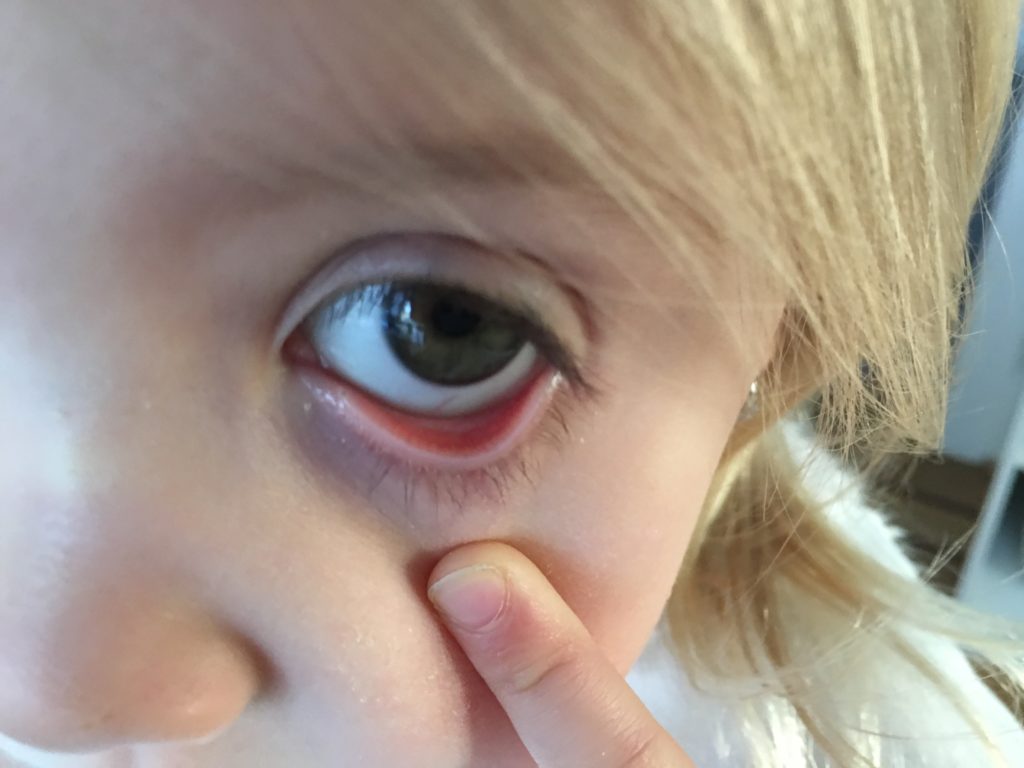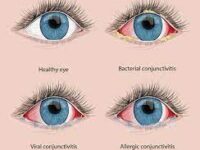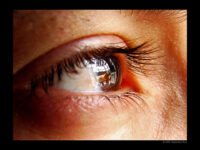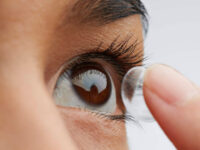The human eye is a marvel of biological engineering, a complex organ that allows us to perceive the world around us. While we often associate vision with the cornea, iris, and lens, it’s the eyeball itself that houses and protects these vital components. But what does a healthy eyeball look like? To answer this question, we need to explore the anatomy of the eye, its various structures, and the signs that indicate a healthy and functioning organ of vision.
The Anatomy of the Eyeball:
The eyeball, also known as the globe of the eye, is a spherical structure approximately one inch in diameter. It’s located within the eye socket and is composed of several layers and structures. These include:
- Sclera: The outermost layer of the eyeball, often referred to as the “white of the eye,” is the sclera. This tough, fibrous layer provides structural integrity and protection to the eye.
- Cornea: The transparent front part of the eye, the cornea, acts as a window, allowing light to enter the eye and protecting it from external elements.
- Iris: The colorful part of the eye, the iris, regulates the amount of light that enters the eye by adjusting the size of the pupil.
- Lens: The lens of the eye is a clear, flexible structure that focuses light onto the retina.
- Retina: The retina is a light-sensitive layer of tissue at the back of the eye. It contains photoreceptor cells (rods and cones) that convert light into electrical signals, which are then transmitted to the brain through the optic nerve.
- Vitreous Humor: This gel-like substance fills the space between the lens and the retina, maintaining the eye’s shape and providing support.
Signs of a Healthy Eyeball:
Clear Sclera: In a healthy eyeball, the sclera should appear clear, with no visible discoloration or abnormal growths. A yellowing or reddening of the sclera can be indicative of certain eye conditions.
Transparent Cornea: The cornea should be transparent, allowing light to pass through without distortion. Cloudiness or opacities in the cornea can suggest issues like cataracts or infections.
Balanced Pupil Size: A healthy iris should regulate the size of the pupil appropriately in response to changing light conditions. Pupils that are consistently too constricted or dilated may signal underlying problems.
Crystal-Clear Lens: A clear lens is essential for proper light focusing. Clouding or opacity in the lens could indicate the development of cataracts.
Normal Retinal Appearance: A healthy retina should appear pinkish-orange, with well-defined blood vessels and a smooth, even surface. Irregularities, such as bleeding or swelling, can be signs of retinal disorders.
Stable Vitreous Humor: The vitreous humor should maintain its gel-like consistency and not undergo liquefaction, which can lead to floaters or retinal detachment.
Good Visual Acuity: Ultimately, a healthy eyeball should contribute to good visual acuity. The ability to see objects clearly, both up close and at a distance, is a key indicator of eye health.
Maintaining a healthy eyeball is crucial for several reasons, as the eyes are one of our most vital sensory organs. Here are some compelling reasons why it’s important to take care of your eye health:
Vision: The most obvious reason is that a healthy eyeball is essential for good vision. Clear and undistorted vision enables us to see and interpret the world around us, making it easier to navigate, learn, work, and enjoy life to the fullest.
Quality of Life: Good vision significantly contributes to one’s overall quality of life. It allows individuals to participate in activities they enjoy, such as reading, sports, hobbies, and social interactions. Vision impairment can lead to a reduced quality of life and potential limitations in daily activities.
Safety: Maintaining healthy eyes is crucial for safety. Good vision is necessary for tasks like driving, operating machinery, and even walking, as it helps individuals identify potential hazards and respond to them appropriately. Impaired vision can lead to accidents and injuries.
Early Disease Detection: Regular eye examinations can help detect underlying health conditions, not just those related to the eyes. Certain diseases, such as diabetes and high blood pressure, can manifest early signs in the eyes, and detecting these signs can lead to early intervention and better overall health outcomes.
Preventing Vision Loss: Many eye conditions, if detected and treated early, can be managed or even reversed to prevent significant vision loss. Conditions like glaucoma, cataracts, and age-related macular degeneration, for example, can often be managed effectively if detected in their early stages.
Maintaining Independence: Good vision is closely linked to independence. For older adults, especially, the ability to see clearly and take care of daily tasks independently is crucial for maintaining a high quality of life and avoiding dependency on others.
Educational and Occupational Success: Clear vision is critical for academic and career success. Children with good vision are more likely to excel in school, while adults with healthy eyes are better equipped to perform their job responsibilities effectively.
Emotional Well-Being: Vision plays a significant role in emotional well-being. Vision loss can lead to feelings of isolation, depression, and anxiety. Maintaining healthy eyes can contribute to better mental health and overall emotional well-being.
Social Interaction: Clear vision is essential for social interactions and maintaining connections with others. Whether it’s recognizing faces, making eye contact, or enjoying non-verbal communication, healthy eyes enhance the social aspect of life.
Overall Health: Healthy eyes are often a reflection of overall health. By taking care of your eyes, you are also promoting general well-being. Lifestyle choices that benefit your eyes, such as a balanced diet and regular exercise, can have positive effects on your overall health.
What does a healthy eyeball look like
Maintaining a healthy eyeball is crucial for a wide range of reasons, from ensuring clear vision and safety to early disease detection and overall well-being. Regular eye check-ups and adopting a healthy lifestyle that promotes good eye health are essential steps in safeguarding your vision and enjoying a better quality of life.
Read also: Tiny White Dot in middle of Pupil
Understanding what a healthy eyeball looks like is essential for maintaining good eye health and preventing vision problems. Regular eye examinations by an optometrist or ophthalmologist can help detect any abnormalities or early signs of eye conditions. In addition to visual acuity, the appearance and functionality of the various eye structures, including the sclera, cornea, iris, lens, and retina, are crucial factors in assessing eye health. Protecting and caring for your eyes can help ensure a lifetime of clear vision and a healthy eyeball.
Some of nutrients and foods that are beneficial for maintaining healthy eyeballs
A balanced diet that includes specific nutrients can promote better eye health and support the overall well-being of your eyes. Here are some key nutrients and foods that are beneficial for maintaining healthy eyeballs:
- Vitamin A: Vitamin A is crucial for good vision, and a deficiency can lead to night blindness. Foods rich in vitamin A include carrots, sweet potatoes, butternut squash, spinach, and kale.
- Lutein and Zeaxanthin: These carotenoids help protect the eyes from harmful light and may reduce the risk of age-related macular degeneration and cataracts. Foods high in lutein and zeaxanthin include leafy greens (e.g., spinach, kale, and collard greens), corn, and egg yolks.
- Vitamin C: Vitamin C is an antioxidant that can help maintain the health of blood vessels in the eyes. Citrus fruits (oranges, grapefruits), strawberries, and bell peppers are excellent sources of vitamin C.
- Vitamin E: Vitamin E is another antioxidant that may help protect cells in the eyes from oxidative damage. Nuts, seeds, and vegetable oils are rich in vitamin E.
- Omega-3 Fatty Acids: Omega-3 fatty acids, particularly DHA, are essential for maintaining healthy retinas. Fatty fish like salmon, mackerel, and trout are excellent sources of omega-3s.
- Zinc: Zinc is important for maintaining the health of the retina and may help prevent age-related macular degeneration. Foods high in zinc include oysters, beef, and poultry.
- Copper: Copper, in combination with zinc and vitamins, helps maintain healthy eye tissues. Copper can be found in nuts, seeds, and whole grains.
- Beta-Carotene: Beta-carotene is a precursor to vitamin A and is essential for good vision. Foods rich in beta-carotene include carrots, sweet potatoes, and pumpkin.
- Anthocyanins: These antioxidants are found in blueberries, blackberries, and other dark-colored fruits and vegetables. They are believed to help improve night vision and reduce eye fatigue.
- Selenium: Selenium is an antioxidant that may help protect the eye’s cells. It can be found in foods like Brazil nuts, fish, and whole grains.
- Lycopene: Lycopene is a powerful antioxidant found in tomatoes and watermelon. It may help protect against cataracts and age-related macular degeneration.
- Bioflavonoids: Citrus fruits, as well as berries and cherries, contain bioflavonoids that can support overall eye health.
Eye doctors, also known as ophthalmologists or optometrists, are healthcare professionals trained to diagnose, treat, and manage a wide range of eye-related conditions and vision problems. They play a crucial role in maintaining the health of our eyeballs and overall eye health. Here’s a more detailed look at what eye doctors can do to handle your eyeball health:
- Comprehensive Eye Examinations: Eye doctors perform comprehensive eye examinations to assess the health of your eyeballs and your overall vision. These exams involve a series of tests and evaluations to check for conditions such as nearsightedness, farsightedness, astigmatism, and other refractive errors. They also evaluate your eye health by examining the structures of the eyeball, including the cornea, lens, retina, and more.
- Prescription for Corrective Lenses: If you need corrective lenses, such as eyeglasses or contact lenses, eye doctors can determine the right prescription based on your individual needs and visual acuity. They take into account your unique refractive errors to ensure you achieve the best vision possible.
- Diagnosis and Management of Eye Conditions: Eye doctors diagnose and manage various eye conditions and diseases, including glaucoma, cataracts, macular degeneration, diabetic retinopathy, and dry eye syndrome. They use advanced diagnostic tools and techniques to detect these conditions in their early stages and develop treatment plans to manage or treat them effectively.
- Treatment of Eye Infections and Injuries: In case of eye infections or injuries, eye doctors can provide immediate care and treatment to prevent further damage or complications. This may include prescribing antibiotics for infections, removing foreign objects, or suturing injuries.
- Laser Eye Surgery: Some ophthalmologists are trained to perform laser eye surgeries, such as LASIK (Laser-Assisted In Situ Keratomileusis) and PRK (Photorefractive Keratectomy), to correct refractive errors and reduce or eliminate the need for glasses or contact lenses.
- Surgical Procedures: Ophthalmologists are medical doctors who specialize in eye care and can perform surgical procedures to address a wide range of eye conditions. This includes surgeries to treat cataracts, retinal detachments, glaucoma, corneal conditions, and more.
- Prescription Medications: Eye doctors can prescribe medications, such as eye drops or ointments, to treat various eye conditions, including allergies, infections, and inflammation.
- Visual Rehabilitation: For individuals with low vision or those who have experienced significant vision loss, eye doctors can provide guidance and rehabilitation services to help patients adapt to their visual limitations and maintain a good quality of life.
- Advice on Eye Health and Safety: Eye doctors educate their patients about good eye care practices, such as protecting your eyes from UV radiation, maintaining a healthy diet for optimal eye health, and avoiding eye strain during prolonged screen time or reading.
- Regular Check-ups: Routine visits to an eye doctor are essential for maintaining eye health. They can detect potential issues early and provide preventative care to minimize the risk of vision problems and eye diseases.
In summary, eye doctors are highly trained professionals who are essential for maintaining the health of your eyeballs and your overall vision. Regular eye examinations and consultations with these specialists can help ensure that your eyes stay in the best possible condition throughout your life. If you have specific concerns about your eye health or experience any changes in your vision, it’s important to schedule an appointment with an eye doctor for a thorough evaluation and appropriate guidance.
Remember that maintaining a well-balanced diet that includes a variety of fruits, vegetables, whole grains, lean proteins, and healthy fats is key to supporting your overall health, including your eye health. Additionally, staying hydrated and avoiding excessive intake of alcohol and tobacco can further promote good eye health. If you have specific concerns about your eyes or your diet, consult with a healthcare professional or an eye specialist for personalized recommendations.







